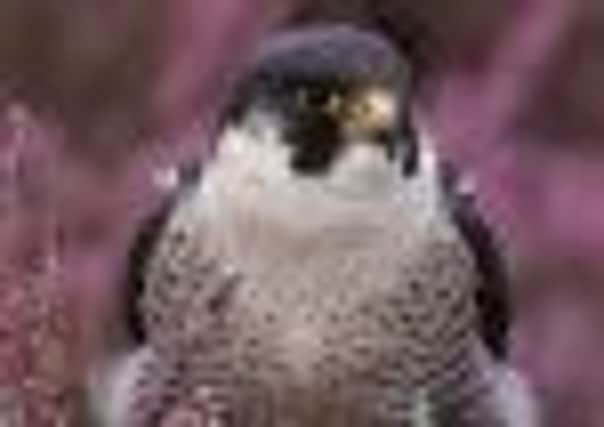Country and Coast: Pigeons beware as the lethal lord of the skies flies back to base


Powerful and direct in flight, armed with unforgiving talons and a razor-sharp, cruelly-hooked beak, and with its famous ability to ‘stoop’ from height onto its prey, this is the ultimate killing machine.
Yet despite its prowess in the survival stakes, this spectacular bird was brought to the brink of extinction by human persecution, catastrophic habitat loss, and especially the post-war use of pesticides with persistent residues – DDT and the like.
Advertisement
Hide AdAdvertisement
Hide AdNow however, the peregrine falcon once more graces the Yorkshire skies, from the high moors to the coastal cliffs and flats.
Even in town and city centres, the bird has found a new niche to its liking, with both modern tall buildings and medieval cathedrals providing the two things it requires the most – high, open cliffs, and a ready supply of pigeons.
It was with this resurgence in mind that I set off to discover its status along the Yorkshire coast around Flamborough and Bridlington.
Banished from the cliff-tops by the 1970s or perhaps earlier, this lord of the air has returned and is once more thriving.
Advertisement
Hide AdAdvertisement
Hide AdNot only do the RSPB report 12-14 pairs along the coastal cliffs here, but watch carefully around the high, magnificent walls and towers of Bridlington Priory, and you will see (and hear) the birds at this ancient urban site, too.
Linking wildlife to heritage, a trip to Scarborough will also confirm the bird’s presence on the cliffs by the old castle, a glorious location for such a spectacular bird.
Of course, the county’s pigeon fanciers and racing pigeon owners will be less than cheerful to hear this news, but, hopefully, the toll will be mostly of wild and feral pigeons.
It is worth checking your local parish church or cathedral for this most wild of our birds of prey.
Advertisement
Hide AdAdvertisement
Hide AdOnce the young birds are in the nest, then the shrieking parents will be obvious, as the calls echo between towers and steeples.
Birds of prey tend to wrench off their victim’s head and eat the brains first. Therefore, the other evidence to look for, but with your eyes pinned not to the skies but to the ground, is the presence of decapitated pigeons, a sure sign.
In the Yorkshire Dales National Park, a peregrine viewpoint is now open to the public every Wednesday to Sunday to July 31, at Malham. On these days, wardens are present from 10.30am until 4.30pm.
The opening times are dependent on the weather – up-to-date information is available at Malham National Park Centre.
Advertisement
Hide AdAdvertisement
Hide AdThe viewpoint is at the bottom of Malham Cove next to the public footpath. Starting at Malham National Park Centre, it is a short walk of less than a mile through the village and along a wheelchair accessible footpath across fields (signposted to the Cove) to the viewpoint.
Details http://www.yorkshiredales.org.uk/peregrines.htm
Ian Rotherham is a writer and broadcaster and Professor of Environmental Geography, Reader in Tourism and Environmental Change at Sheffield Hallam University.